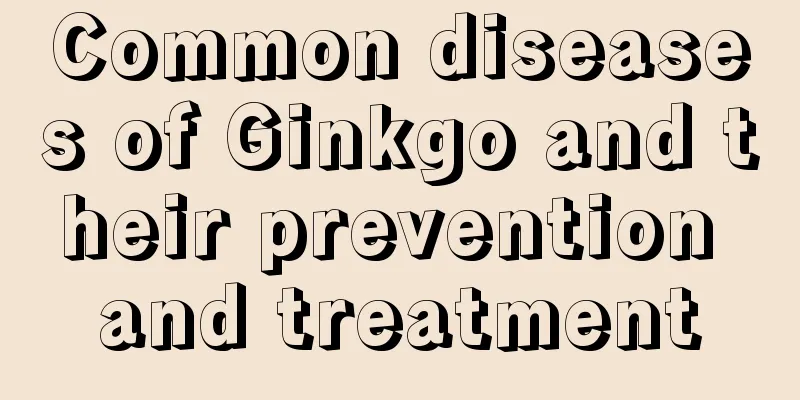Common diseases of Ginkgo and their prevention and treatment

Common diseases of Ginkgo and their prevention and treatmentStem rotIn the early stages of the disease in Ginkgo, the underground root tissue and epidermal tissue at the base of the stem will turn brown, and water-soaked spots will appear. The leaves will fade and droop, and the diseased part will continue to spread, surrounding the base of the stem and extending to the upper part of the seedling, eventually leading to the death of the entire plant. The prevention and treatment methods are as follows: 1. Carry out preventive work, treat the soil and disinfect the seedlings. 2. Control the water content appropriately and use organic fertilizer to ensure that it is fully decomposed. 3. In winter, we must strictly prevent frost damage and improve the resistance of seedlings. Remove and burn dead seedlings promptly. 4. For diseased ginkgo, spray 200-300 times diluted 50% carbendazim wettable powder once every week for a total of 2-3 times. Leaf blightSymptoms include circular or irregular spots on the bark, which gradually swell and crack longitudinally. After that, the lesions spread and the tree may undergo ring-shaped necrosis, eventually leading to the death of the plant. Specific prevention and treatment are as follows: 1. The key to preventing and controlling ginkgo wilt disease is to strengthen management, enhance tree vigor, and improve the plant's disease resistance. 2. Remove diseased plants promptly and thoroughly, and burn them in a concentrated manner to reduce the source of infection. 3. Scrape off the formed spots in time. The scraping depth should reach the wood. Apply 100 times diluted 50% carbendazim wettable powder or 1:100 Bordeaux mixture to the wound to kill the bacteria and prevent its spread. Early yellowingThis is a physiological disease caused by zinc deficiency. The cause of chlorosis and the expansion of lesions are due to the long-term application of chemical fertilizers in the nursery, while organic fertilizers are insufficient, which in turn causes zinc deficiency in the soil and poor fertility. The disease usually appears in June, and the spots expand rapidly in July and August, and the diseased leaves die. The prevention and treatment methods are as follows: 1. Generally in March and April, apply zinc fertilizer to diseased ginkgo. 2. Do a good job of irrigation and drainage in the dry season and flood season respectively. |
>>: Common diseases of Impatiens balsamina and their control
Recommend
Advantages and disadvantages of Monet rose
Monet rose is a French variety, famous for its be...
Cultivation methods and precautions of black feather jade
1. Environment The plant of Jade has very large t...
Diseases and Pests of Trachelospermum variegatedum and Their Control
Diseases and their control of Trachelospermum var...
How to open a durian
1. Pry along the crack Ripe durian usually has cr...
How to grow flowers with crystal flower mud
Flower cultivation method Crystal mud can store w...
Making and appreciating simple rose flower arrangement
Material Rose flowers, rose leaves, flower mud, l...
How to grow the Weeping Guanyin quickly? Can the Weeping Guanyin be grown indoors?
1. How to grow fast 1. Suitable temperature: The ...
Ten common hedge plant species
Morning Glory Morning glory is a climbing plant. ...
How many years does it take for grapes to bear fruit?
Introduction to grape growing Grapes prefer a war...
How to promote budding of boxwood bonsai
1. Promote germination according to growth habits...
What fertilizer is best for false epiphyllum?
Fertilization time for false epiphyllum Normally,...
How to grow reeds well
Reed growing conditions Reeds prefer a moist envi...
Reasons and treatments for longevity flowers not blooming
Although Kalanchoe is a very beautiful flower pla...
Does Purple Bamboo Plum prefer shade or sun?
Does Purple Bamboo Plum prefer shade or sun? Purp...
How to treat grape yellow spot disease and what medicine to use
1. Causes It is infected with xanthophyllosis mos...









